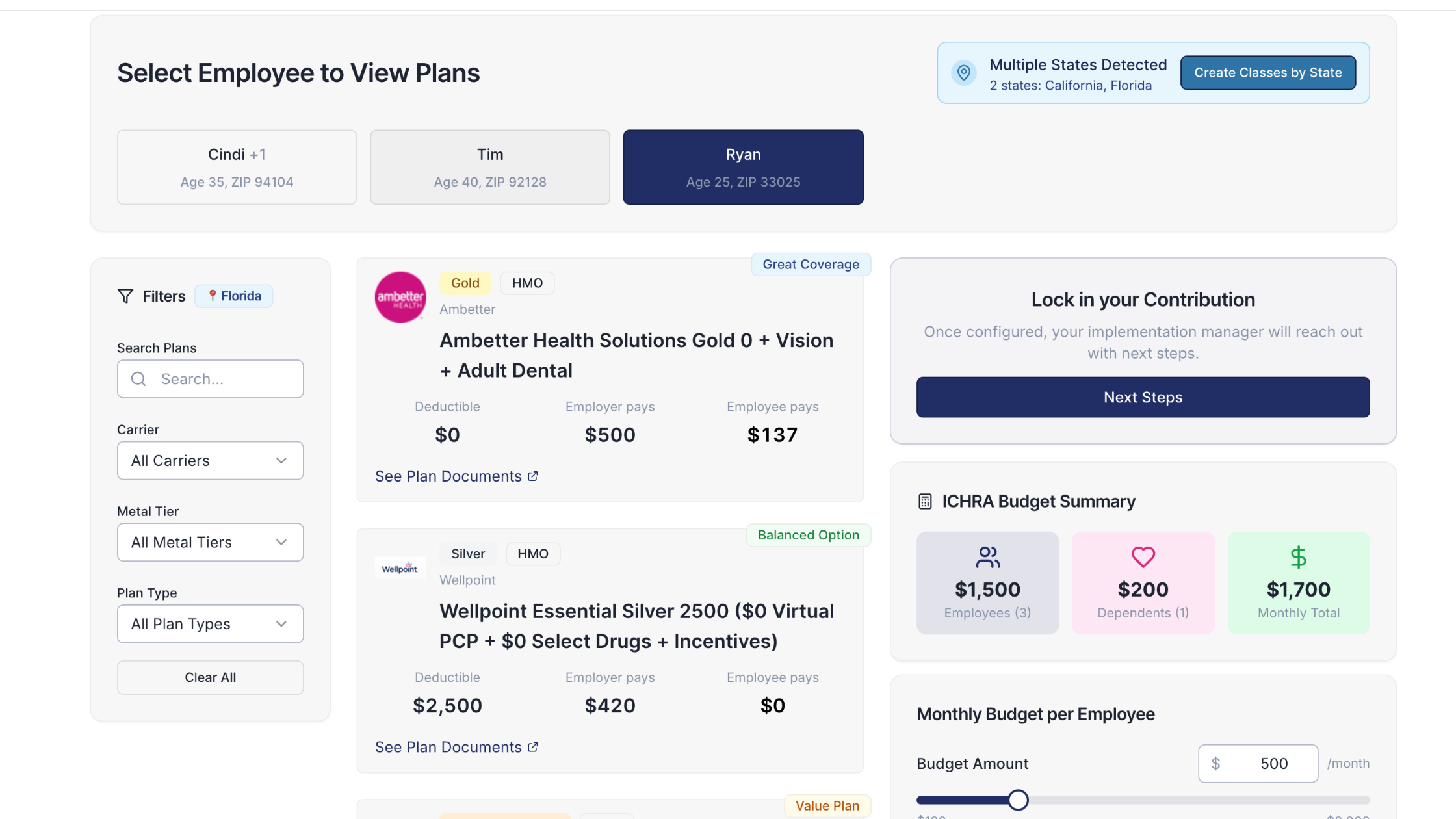How to Determine if You are an Applicable Large Employer (ALE)

In this article, we will break down the complex world of Applicable Large Employers (ALEs) and their responsibilities as employers providing an Individual Coverage Health Reimbursement Arrangement (ICHRA) to their employees.
Defining Applicable Large Employers (ALEs)
Applicable Large Employers (ALEs) are businesses with 50 or more full-time employees, including full-time equivalent employees or "FTEs."
FTEs are calculated by adding up the total hours worked by part-time employees and dividing that number by the standard hours worked by a full-time employee. This calculation helps determine if your business meets the threshold of 50 or more full-time employees.
ALEs face legal obligations under the Affordable Care Act (ACA). They are required to offer affordable healthcare coverage to their full-time employees, or face potential penalties. This means that as an ALE, you need to carefully consider your health benefit options and ensure that they meet the ACA's affordability standards.
Accurately Calculating ALE for Your Business: A Step-by-Step Guide
Determining your ALE status involves intricate calculations. Here's a comprehensive step-by-step guide to help you navigate through the process:
- Count all full-time employees: Begin by counting all your full-time employees, defined as those working an average of 30 or more hours per week, for each calendar month. This includes both salaried and hourly employees. It's important to keep accurate records of their hours to ensure precise calculations.
- Count the hours worked by part-time employees: Next, you need to determine the number of hours worked by your part-time employees, those working fewer than 30 hours per week. Add up the total number of hours worked by all part-time employees during a specific calendar month.
- Divide the total part-time hours by 120: Once you have the total number of hours worked by part-time employees, divide that number by 120. This calculation is necessary to convert part-time hours into full-time equivalent (FTE) employees. For example, if your part-time employees worked a total of 480 hours in a month, you would divide 480 by 120, resulting in 4 FTE employees.
- Add the full-time employee count to the FTE count: Now, add the full-time employee count from step 1 to the FTE count from step 3. This will give you the combined total of full-time and FTE employees for a specific calendar month.
- Divide the combined total by 12: To determine your average monthly count, divide the combined total of full-time and FTE employees by 12. This calculation provides an accurate representation of your ALE status throughout the year.
Need help? Venteur's advisors are here to help. Get in touch with our team today.
You got questions, we got answers!
We're here to help you make informed decisions on health insurance for you and your family. Check out our FAQs or contact us if you have any additional questions.
Explore more related content
What is Venteur
Explore the best human-first Health Insurance platform
Simple, personalized health benefits
Sign up in minutes, define your contribution, and let your employees choose the health plan that works right for them
Integrations to make everything run smoothly
We'll connect with your payroll and finance systems to make deductions and premium payments seamless
Easy onboarding and off-boarding
In just a few clicks, add your roster and make updates on the fly. We'll handle it from there.
Venteur Certified Brokers to help your employees pick the right plan
Our trusted brokers ensure the best outcomes for employees and employers by unlocking health savings and providing unrivaled plan options.
AI-powered plan recommendations to give you confidence while you shop
Backed by 30 years of healthcare data, Venteur’s AI helps employees compare and choose the best plan for their unique situation.
Compliance and reporting because no-duh!
Venteur manages plan administration, reporting, and compliance so you can focus on growing your business.


